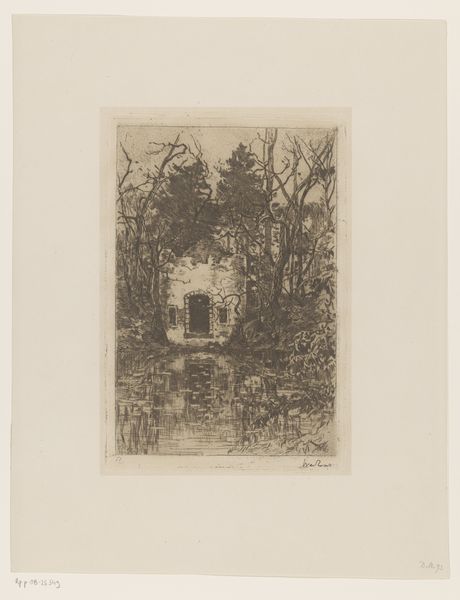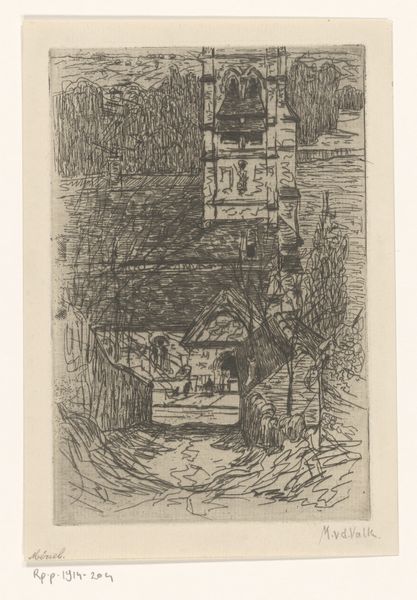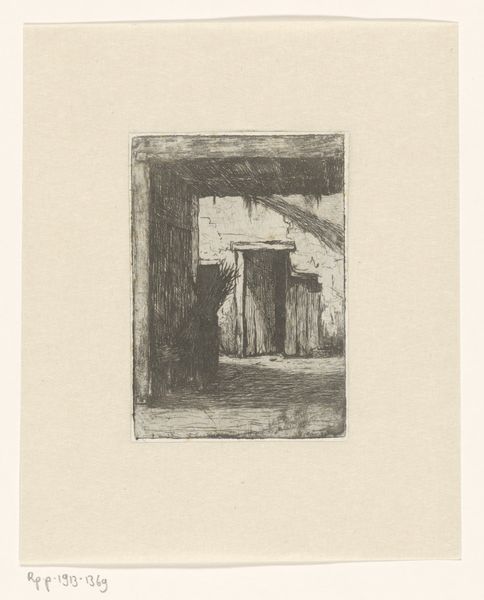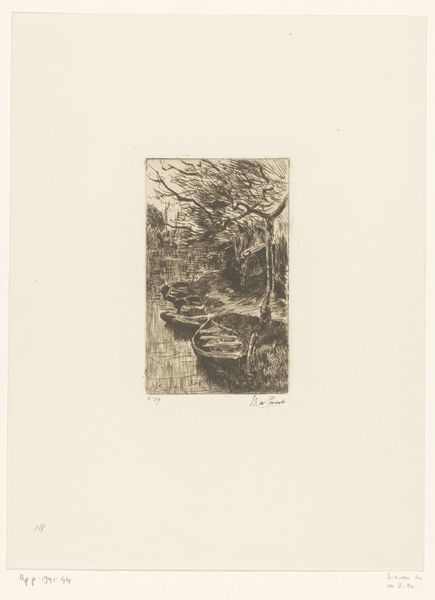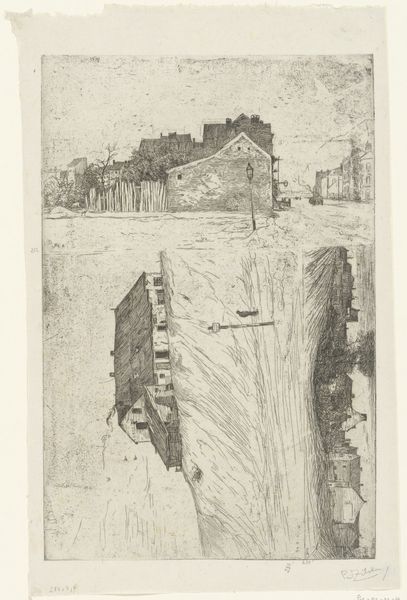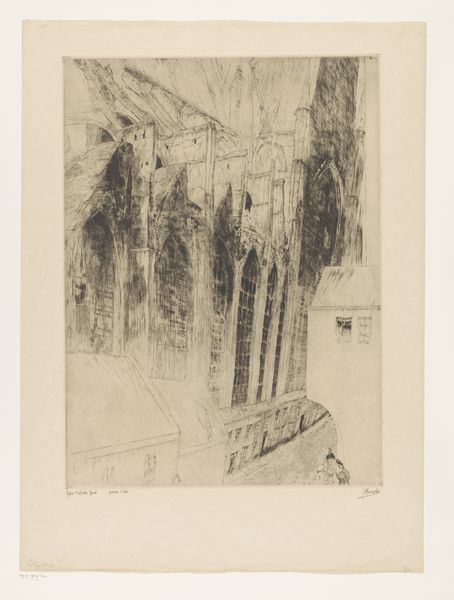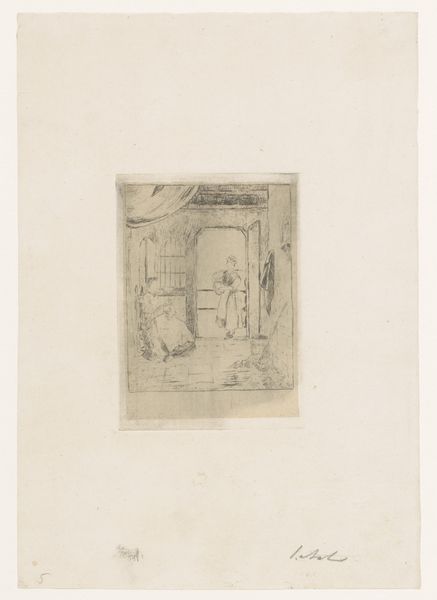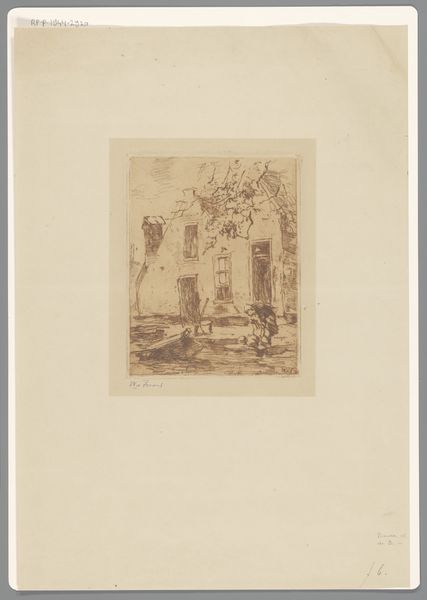
Dimensions: height 151 mm, width 150 mm
Copyright: Rijks Museum: Open Domain
Willem de Zwart etched this small, evocative print of a ruin by a pond sometime around the turn of the 20th century. The controlled use of line is evident, made with careful passes of an etching needle on a metal plate. The image is built up through labor-intensive work, demonstrating the artist’s mastery over the process of controlled corrosion, using acid to bite into the metal. The final print, made using an intaglio press, carries a subtle, palpable presence, as we can see how the ink has pooled in certain areas of the print. This aesthetic approach carries social meaning; etching was at that time considered to be among the most progressive graphic techniques. De Zwart was not only attentive to the nuances of the landscape, but also to a certain democratized way of making art.
Comments
No comments
Be the first to comment and join the conversation on the ultimate creative platform.




